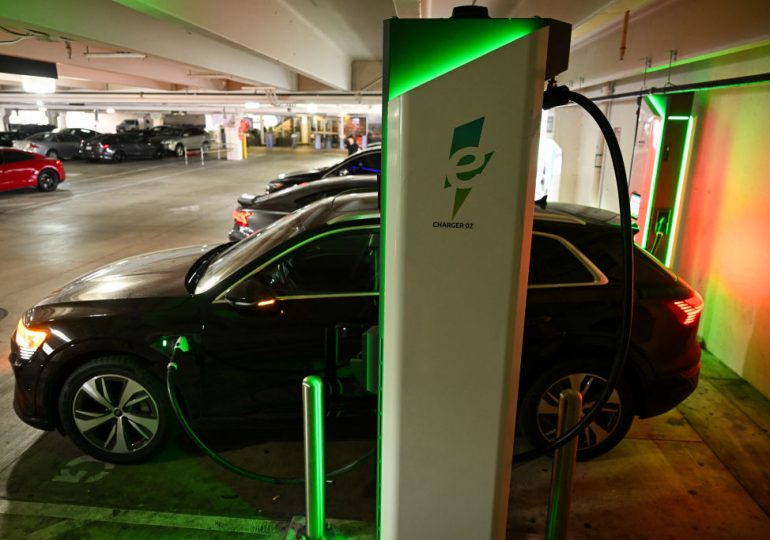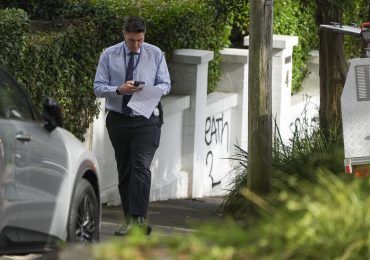During her 11 year stint as the sustainability manager for Columbia, Mo., Barbara Buffaloe cooked up a lot plans to adapt the city for climate change and cut its carbon footprint. The college town planned to buy renewable energy and electrify its buses, among other things. All of it would serve the goal of cutting the community’s emissions 35% by 2035.
[time-brightcove not-tgx=”true”]
But Buffaloe faced one giant roadblock: funding. In a section labeled “tension point,” the city’s 2019 climate action and adaptation plan bluntly said that paying for the programs would be difficult and could require a rebalancing of priorities and, potentially, new taxes and fees. In the meantime, the city focused on what she described to me as “incremental improvements.”
Then, almost overnight, the opportunity to implement changed with the passage of a series of federal infrastructure laws, including and especially the Inflation Reduction Act (IRA). The 2022 law opened up new avenues for cities to fund infrastructure projects. “In the last two years, we have seen significant strides towards meeting these goals because of the historic investment we’ve been receiving from the federal government,” Buffaloe told me in September.
Columbia is not alone. Across the country, local governments are beginning to receive their slice of the billions the IRA allocated to city-led climate projects. It’s an important development with implications for the lives of residents as well as the viability of the law and the broader fight against climate change. Much of the focus of the IRA’s impact has been on uptake by the private sector as factories pop up to take advantage of its tax incentives. But the impact in American cities, where most people live, will also have long-term political, and social implications.
Read more: Companies Shouldn’t Overlook This IRA Fund That’s Boosting Local Climate Projects
Cities have a crucial role to play in the fight against climate change. More than half of the global population lives in urban environments, and 70% of global emissions occur in cities. And they often are somewhat removed from the ideological and partisan divides that hamper progress at the national level.
“We are the doers. We get things done,” Sadiq Khan, who has pursued an aggressive climate agenda as the mayor of London, told me last month. “Cities are the first responders when it comes to tackling the climate emergency.”
Nonetheless, for most of the three decades when climate change has been an issue of global concern, cities have received short shrift—and with understandable reason. National governments tend to have larger revenue streams and the credibility to negotiate with their counterparts overseas.
The picture in the U.S. changed dramatically in 2017, however, when then-President Trump inadvertently elevated a nascent movement of cities committed to tackling climate change. As the U.S. pulled out of the Paris Agreement and nixed environmental regulations, mayors committed to a “we are still in” movement and began to cook up climate plans that could be enacted at the local level. But devising plans is easier than implementing them. And many cities struggled with the nuts and bolts of putting their ideas into action—especially when it came to finding the necessary funds.
The federal government has a long history of relying on local governments to distribute dollars, but that money more typically flowed through state, not city, governments. The Biden Administration changed that by making cities a key funding recipient of money flowing from the Infrastructure Investment and Jobs Act and the IRA—two landmark spending laws with big energy and climate provisions. An analysis from C40, a network of cities committed to acting on climate change, says that local governments in the U.S. qualify for $47 billion in IRA funding.
This funding meant that eager communities all of the sudden had an opportunity to fulfill their green ambitions. Columbia, for example, received a grant to build EV charging infrastructure for consumers and another to buy electric buses.
But not every place was equally prepared to pursue the grants, which require detailed applications and costly planning documents. “What the Infrastructure Act, similar to the IRA, asked is for cities to have a vision for how they’re moving their community into the future economy,” says James Anderson, who leads government innovation programs at Bloomberg Philanthropies. But “if you’re a city and you’ve never been eligible for federal funding before… there’s a lot of hope and ambition, but not a lot of capacity to realize it.”
To get over that hurdle, a consortium of philanthropic organizations and non-profits—including Bloomberg Philanthropies, the U.S. Conference of Mayors, and the National League of Cities—joined forces to create a “local infrastructure hub” that trained cities and towns in how to apply. To date, members of the hub have received more than $2.5 billion in funding. That means more federal dollars reaching communities that would otherwise likely have been left out—and greatly increasing the political salience of the IRA.
For followers of U.S. climate policy, no question is more immediately pressing than the future of the IRA. If Trump were to win the election next month, a cohort of Republicans would almost certainly push to repeal some of it, if not the whole thing.
But the funding for infrastructure projects in local communities is one factor that would make repeal more difficult. Buffaloe, the Columbia mayor, says that local elected officials like to show up at ribbon cuttings for projects funded by federal laws they didn’t support. “Maybe the next time they’ll choose the benefit to us as opposed to just relying on political rhetoric,” she says.
In Mesa, Ariz., a city of 500,000 people near Phoenix, Mayor John Giles says that federal dollars have helped catalyze burgeoning semi-conductor and electric vehicle industries. And while he still receives occasional community pushback to the city’s new EV infrastructure push, funded in part with federal dollars, he thinks the “ship has sailed” when it comes to community acceptance. EVs are now prevalent on the streets of Mesa and the conversion of city vehicles is saving money, he says. “Success creates additional success,” says Giles. “Certainly there’s momentum that has been built. I think we’ll continue to build.” (Giles, a Republican, spoke at this year’s Democratic National Convention.)
The biggest challenge may be explaining to constituents that all of these welcome developments are the result of federal dollars meant to fight climate change. A Washington Post poll last year found that 71% of Americans had heard very little or nothing at all about the IRA, and the Harris campaign has largely skipped the opportunity to emphasize its success on the campaign trail.
Depending on the outcome of the election, a critical question in the coming year may be whether the investments popping up in people’s backyards—public and private—will be enough to keep the IRA largely intact, even if most Americans don’t know what is.
TIME receives support for climate coverage from the Outrider Foundation. TIME is solely responsible for all content.
Leave a comment








